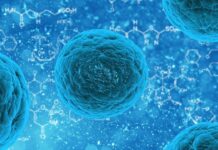Andrea Damascelli was first drawn to the physics he studies today by his excitement about one big idea: the interaction between light and matter. He is now a professor of physics and astronomy at the University of British Columbia, and the Scientific Director of the Stewart Blusson Quantum Matter Institute (SBQMI).
“Of course, interaction between light and matter is all around us, but understanding that was the very beginning of quantum mechanics,” says Damascelli.
Today, the technology to generate different forms of light is possible thanks to accelerators. In particular, Damascelli developed a beamline called the Quantum Materials Spectroscopy Centre, in addition to lasers developed at SBQMI.
“These days we’ve gone into a kind of work where we use light not only to probe the material, but also to drive the material properties,” explains Damascelli.
The precision of these light-based tools opens up new possibilities for how materials can be altered and pushed beyond the limits of what can occur in nature.
“We are used to looking at materials in terms of what kind of phase they display — water for instance can be a solid, it can be a liquid, it can be a gas,” adds Damascelli. “Often these phases are realized in a material by tweaking the chemical composition or solvent system.
“These days we are coming in with an approach which is called the optical manipulation of quantum states. We use a laser source which generates extremely fast pulses, very short in time, to really drive the material with a very strong field to exhibit completely new properties, which may be very useful only for a very short amount of time. But perhaps that’s all you need for that particular property.”
These light-based tools push matter to the limits of possibility, giving rise to behaviour and phenomena that haven’t been observed before. All of this started with a single big idea that expands our understanding of the essence of matter.






































